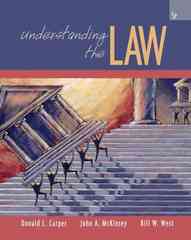


Help me with my microeconomics questions
I. Short questions (20 points). I.1 The following two statements are either true or false. If the statement is true, give an explanation. If the statement is false, provide a counter-example. a) Any SPNE is also a NE. b) If a game has no proper subgames, then the set of SPNE and the set of NE coincide. 1.2 Two identical firms compete in quantity in a market. Explain the consequences of changing from the static game (Cournot) to the dynamic game (Stackelberg): who wins, who loses and why. 1.3 Define the elements of a Bayesian game and also the concept of Bayesian Nashs equilibrium. 1.4 In a finitely repeated game one can always find a SPNE in which the payoffs are Pareto optimal. Is that statement true? Why?II.1 USA intelligence suspects that North Korea is thinking about starting a program to develop nuclear missiles. This will dramatically affect the stability of the region. According to the testimony of fugitives that abandoned the country, life conditions are very poor. This makes USA authorities propose the following agreement to North Korea: USA will give a 25 billion dollars aid to North Korea if it abandons its nuclear program. The aid will be given once the agreement is signed, but North Korea promises to give it back of the USA finds proof that the nuclear program is still on (asume this is a binding agreement). Without the proof, North Korea will not give the money back. To get the proof, USA can make the International Atomic Energy Agency inspect North Korean installations. The cost of the inspection is 10 billions and will be paid by the USA. The USA finds that the stability of the region is worth 90 billion dollars, whereas for North Korea, to give up its nuclear program has an estimated cost of 20 billion dollars. a) Identify the set of strategies for each player, the payoffs and the normal form of the game. b) Find the Nash equilibria of the game. c) Which are the expected payoffs for each player in the equilibrium? Suppose that USA changes the amount of the aid to North Korea from 25 to 30 billion dollars. d) Find the expected utility for USA in the new equilibrium. Do you find a paradox when comparing with c)? Explain it.II.3 Borja and Lorenzo are friends, and bargain over the sale of a 1000 cc motorcycle that Borja owns and Lorenzo is interested in. The value of the motorcycle for Borja is 3,000 euros, and for Lorenzo is 8.000 euros. They agree on the following bargaining procedure. First Lorenzo offers a price, then Borja accepts or rejects it. In case of accepting, the negotiation is over. If Borja does not accept Lorenzo's offer, Borja will offer a price that Lorenzo must accept or reject. In case of no agreement the procedure ends with no sale. In case a player is indifferent between accepting and rejecting he accepts. They both value future payoffs the same as present ones. a) Represent the extensive form of the game and compute its SPNE. b) What is the agreement they will reach, what are the payoffs, and in which period will the agreement be reached? c) If the negotiations are initiated by Borja, who will benefit in the negotiation? What is the agreement they will reach, which are the payoffs, in which period will be reached?II.4 In January 2013 two automobil firms must decide simultaneously whether to produce a new electric vehicle. Firm X will obtain 18 million euros in case it produces the electric vehicle as long as Firm Y does not produce his. On the other hand, if Firm Y produces his vehicle, and Firm X does not, Firm Y gains 15 million euros. In both cases, the firm that does not produce the vehicle gains just 7 million euros. If both of them produce the vehicle they get 8 million each. If no one produces the vehicle, they get 12 million each. All gains are per year. a) If the decision has to be made every January 1st each of the following three years, and knowing that profits are increased by one million every year, find the SPNE and the payoffs in the SPNE. Suppose now that the decision has to be made on January 1st every year indefinitely, and that profits each year are the same as the first year. b) Will the firms be able to reach a cooperation agreement? Which one? c) Compute the minimum discount factor for the firms to be willing to comply with the agreement. d) Indicate the SPNE that supports the agreement. Compute the expected payoffs in that SPNE.II.5 Two firms, 1 and 2, compete a la Cournot. The (inverse) market demand function is p = 6 -Q, where p is the market price and O is the total quantity produced by the two firms. Firm 2 has marginal costs cz = 3. Firm I has marginal cost equal to CA = = with probability 2/3 and to CA = - with probability 1/3. Firm 1 knows its marginal cost while Firm 2 only knows that it is CA or Cp with probabilities described before. a) Find the reaction functions of Firm 1. b) Find the reaction function of Firm 2. c) Find the Bayesian Nash Equilibrium. d) Draw the reaction functions and find the equilibrium graphically using the fact, observed in the reaction function of Firm 2 seen in b), that Firm 2 reacts against the expected quantity of Firm 1














